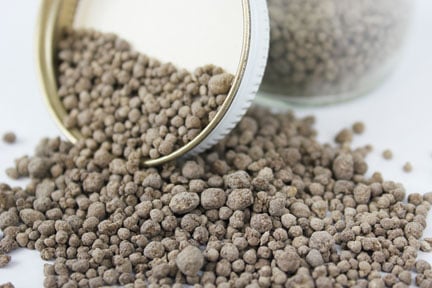From drywall to soil amendments, and even tofu, gypsum products surround the average person every day. In fact, the United States alone consumes more than 30 million tons of gypsum annually. Gypsum has many unique characteristics that contribute to its popularity, and gypsum processing works to bring out these benefits for commercial use.
Common processing methods used to prepare gypsum for commercial use include gypsum ore drying, slurry mixing, and gypsum pelletization. In order to utilize this valuable material, a number of gypsum processing issues must be addressed. The following list highlights typical challenges associated with these common processing methods, along with general processing challenges linked to gypsum.
The Gypsum Ore Drying Method
Abrasive and Moisture Levels
Gypsum ore is similar to many other types of rock in that it is abrasive. Additionally, if its moisture content is greater than 0.5 weight percent, treatment in an industrial dryer is required to bring the material to its ideal moisture level. However, it is imperative that the dryer equipment is heavy-duty in order to withstand gypsum’s abrasive nature. A gypsum dryer, most often a rotary dryer, is an equipment solution robust enough to tackle the issue of abrasiveness, while providing a conformal drying technique to a high volume of material. Additional customizations such as heavy-duty linings are also available for counteracting the eroding characteristics of gypsum.
The Pelletization Method
Moisture Levels
A key dynamic to the entire gypsum pelletization process is moisture. If accurate moisture levels are not monitored and maintained, the end results will be less than desirable. An ideal pelletization process will achieve appropriate moisture levels through the following critical stages: pre-conditioning, pelletization, and drying. Since these stages build on each other, the only way to ensure an optimal end product is by maintaining moisture levels at each step.
Pre-Conditioning: A pin mixer is used to impart an intense spinning action on gypsum and its binder. The result is a well-blended material with evenly distributed binder and material densification. In addition to creating a homogenous mixture, the goal is also to achieve the proper moisture level for pelletization. If pre-conditioning is successful, the resulting mixture will be easier to handle and control when forming gypsum pellets on the pelletizer.
Pelletization: A disc pelletizer tumbles the pre-conditioned mixture on a rotating disc. As pellets gradually grow, additional binder and gypsum material are fed continually onto the disc pelletizer. Moisture levels, and the ratio of material to liquid (binder), are critical aspects in attaining desired pellet attributes. Too much or too little moisture will inhibit size, strength, and other desirable pellet characteristics.
Drying: After the gypsum pellet is formed, an industrial drying system is utilized to draw moisture out of the pellet. Lowering moisture levels benefits a pellet by strengthening the end product and preventing unwanted issues such as clumping. A rotary dryer brings additional benefits to the end product by imparting a tumbling action that naturally rounds and polishes the pellet to create a more uniform product. Gypsum requires co-current airflow and longer retention times to ensure proper drying is achieved and product integrity is maintained.
General Gypsum Processing Challenges
Build-Up
Gypsum’s natural ability to harden and cake into a cement-like form makes it difficult to remove from equipment. This can be accentuated if gypsum is dried at too high of a temperature, where molecular moisture is being removed, resulting in an undesirable form of gypsum. If this occurs, and the undesirable gypsum is exposed to moisture, build-up can occur. Gypsum build-up, if left untreated, will eventually wear down moving parts and result in maintenance issues for processing and material handling equipment. Consistent removal of material build-up, as well as an appropriate maintenance program, is recommended in order to counteract this issue.
Clumping
Gypsum’s ability to harden into a cement-like form also makes it prone to clumping during drying or storage. As a result, a number of preventative measures are recommended to combat this issue.
- Drying: Adding a drying step prevents clumping in a number of ways. For example, the tumbling action within a rotary dryer polishes gypsum and showers material through a heated stream of air. As a result, a conformal level of drying is applied, clumping is minimized, and the resulting product is easier to handle and store. In addition, rotary dryers can be customized with knocking systems that work to further reduce lumps within the material while dislodging any gypsum that would otherwise build-up inside the equipment.
- Screw Conveyors: The feed trajectory of the screw conveyor is an efficient solution against material clumping. Lumps are naturally broken apart using a flinging motion that transfers the gypsum into subsequent processing equipment.
Variability
The composition of mined gypsum varies from region to region. As a result, gypsum processing problems may differ and solutions will consequently vary. The best way to determine and confirm gypsum processing methods is through testing. Subtle changes to binders or processing times may be the key to delivering optimal results; therefore, testing is always recommended to confirm best practices for gypsum processing.
Synthetic gypsum must also be analyzed to assess its suitability and best processing methods. The wide range of variability within synthetic gypsum is due to it being a by-product of industrial processing. Desulfurization is performed on petroleum or flue gases from power plants, and the variance in materials and treatment techniques most often makes synthetic gypsum a unique material. Even more so than mined gypsum, each synthetic variation must be evaluated to determine the best individual processing methods in order to ensure the best final product results.
After decades of experience addressing gypsum processing problems, FEECO knows how to handle the challenges this unique material presents. Combined with our ability to fully customize equipment and run feasibility testing in a state-of-the-art testing facility, FEECO is an all-in-one source for solving gypsum processing issues at any stage of manufacturing. For more information on FEECO’s extensive gypsum processing knowledge, contact us today!



